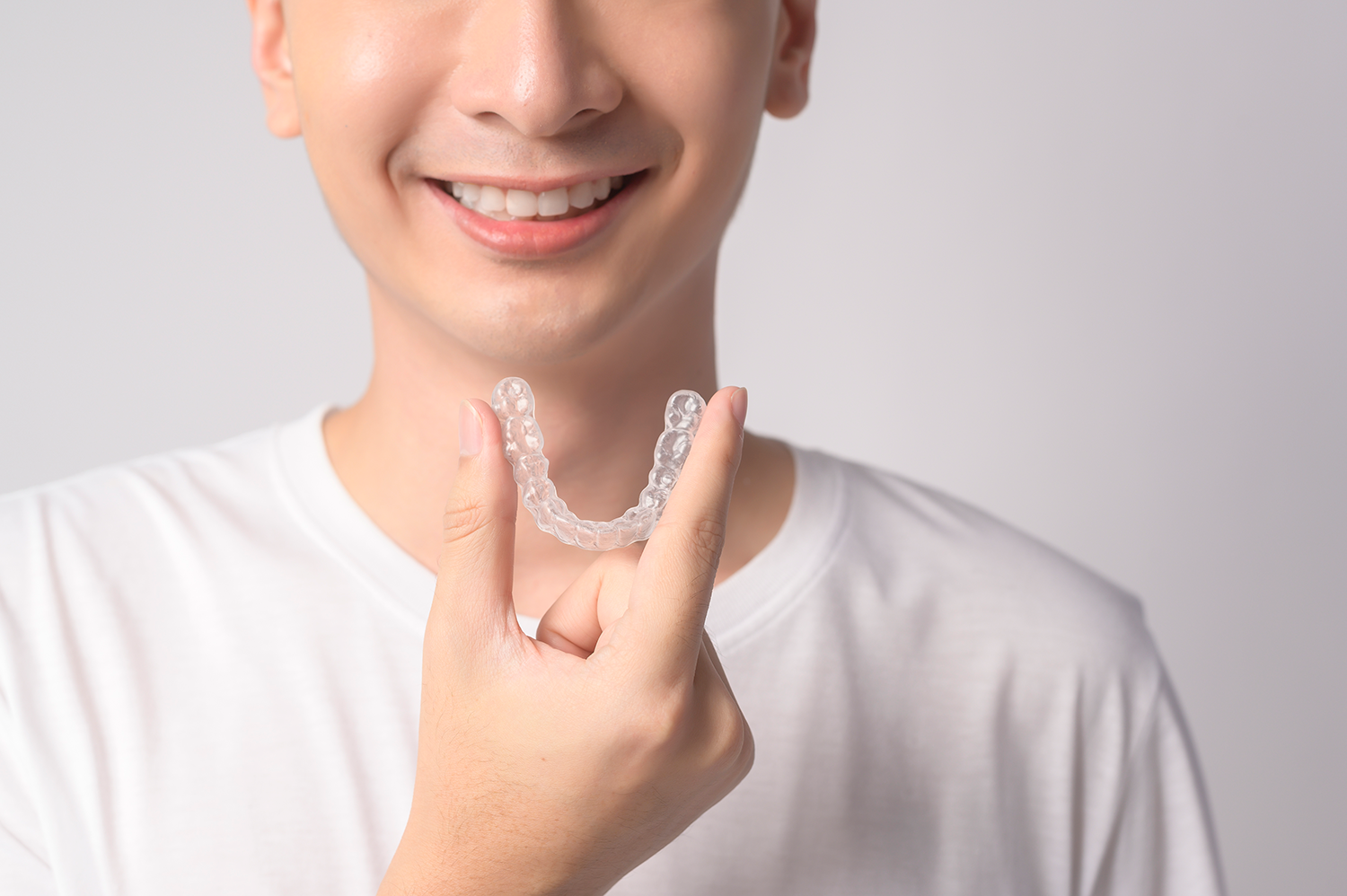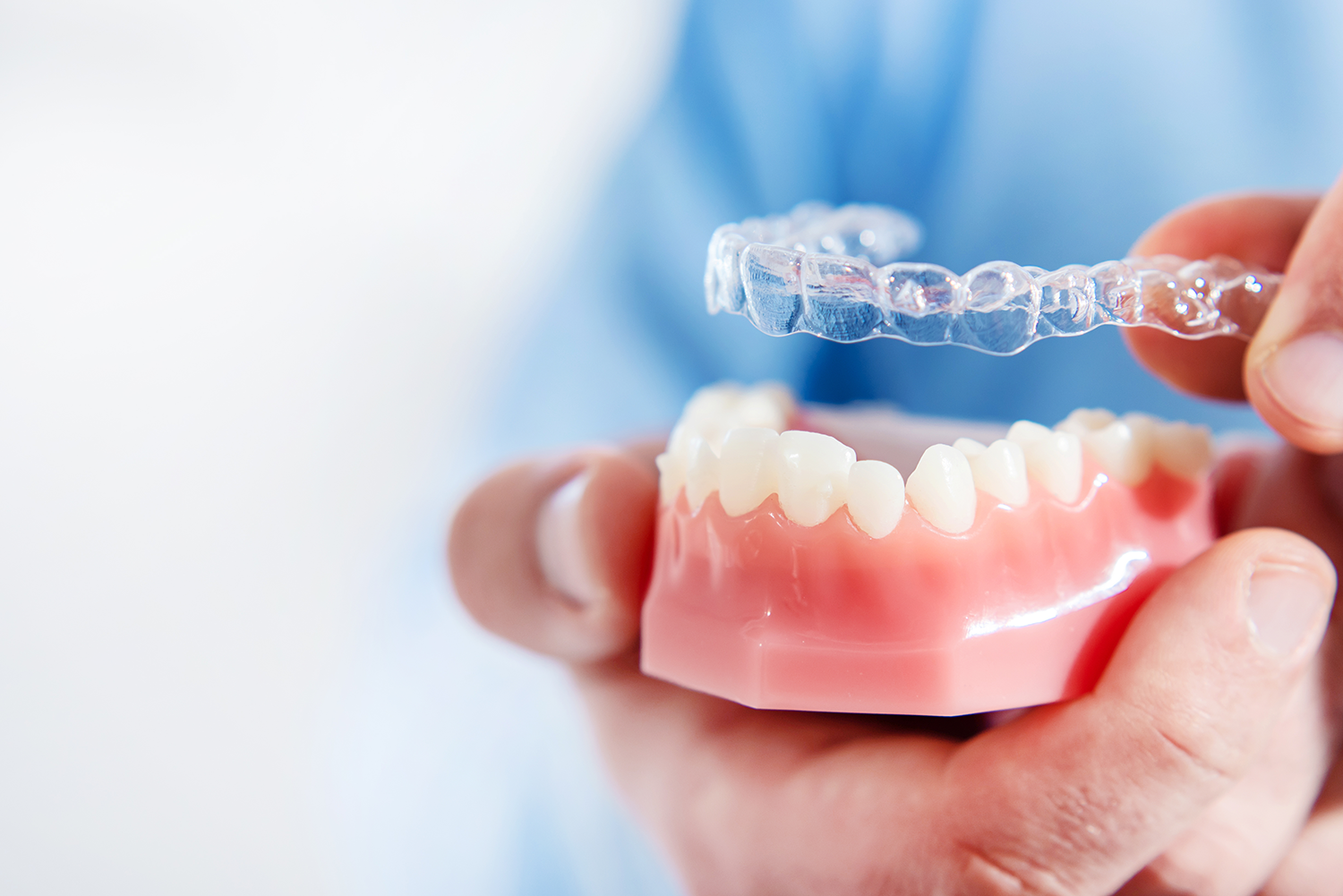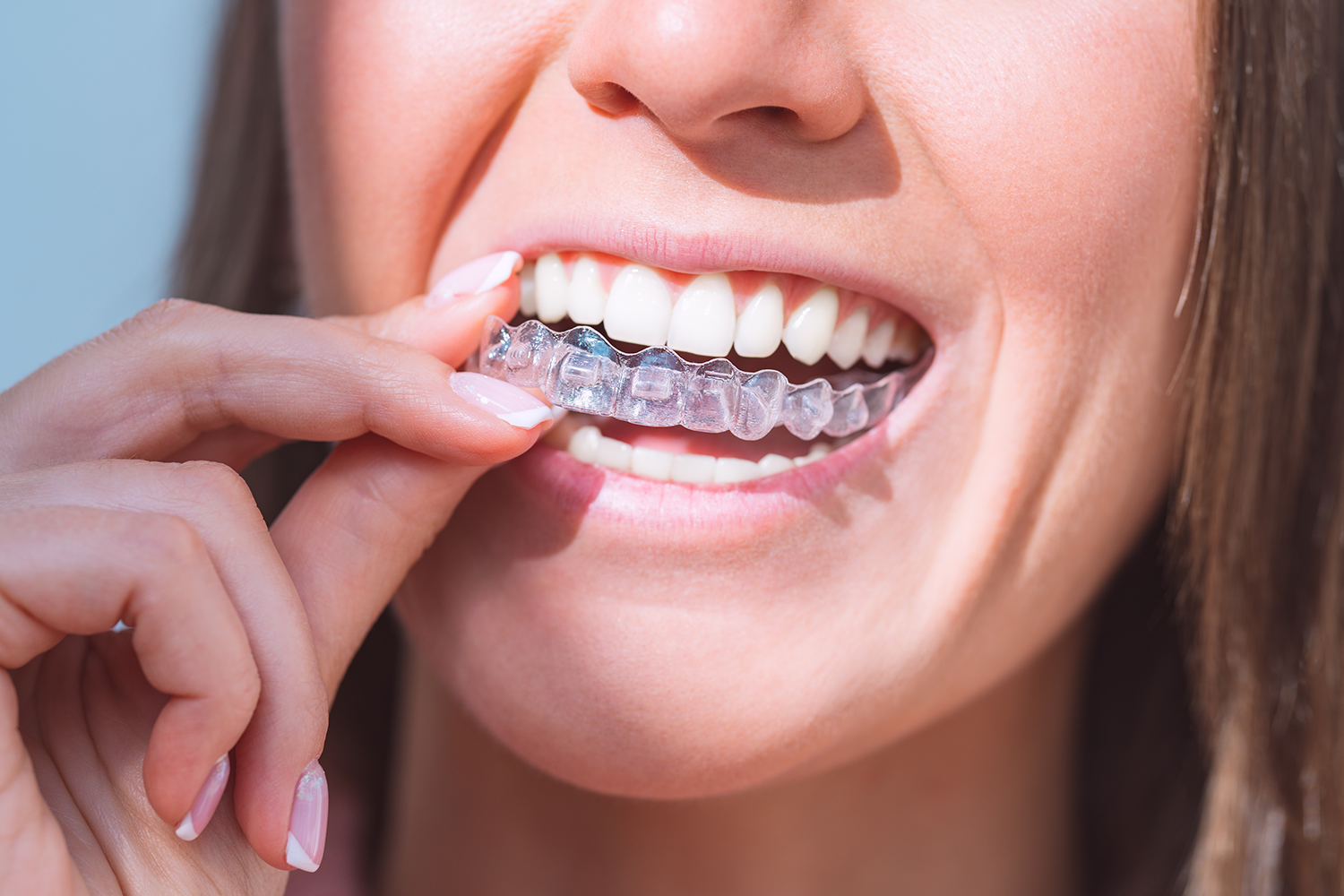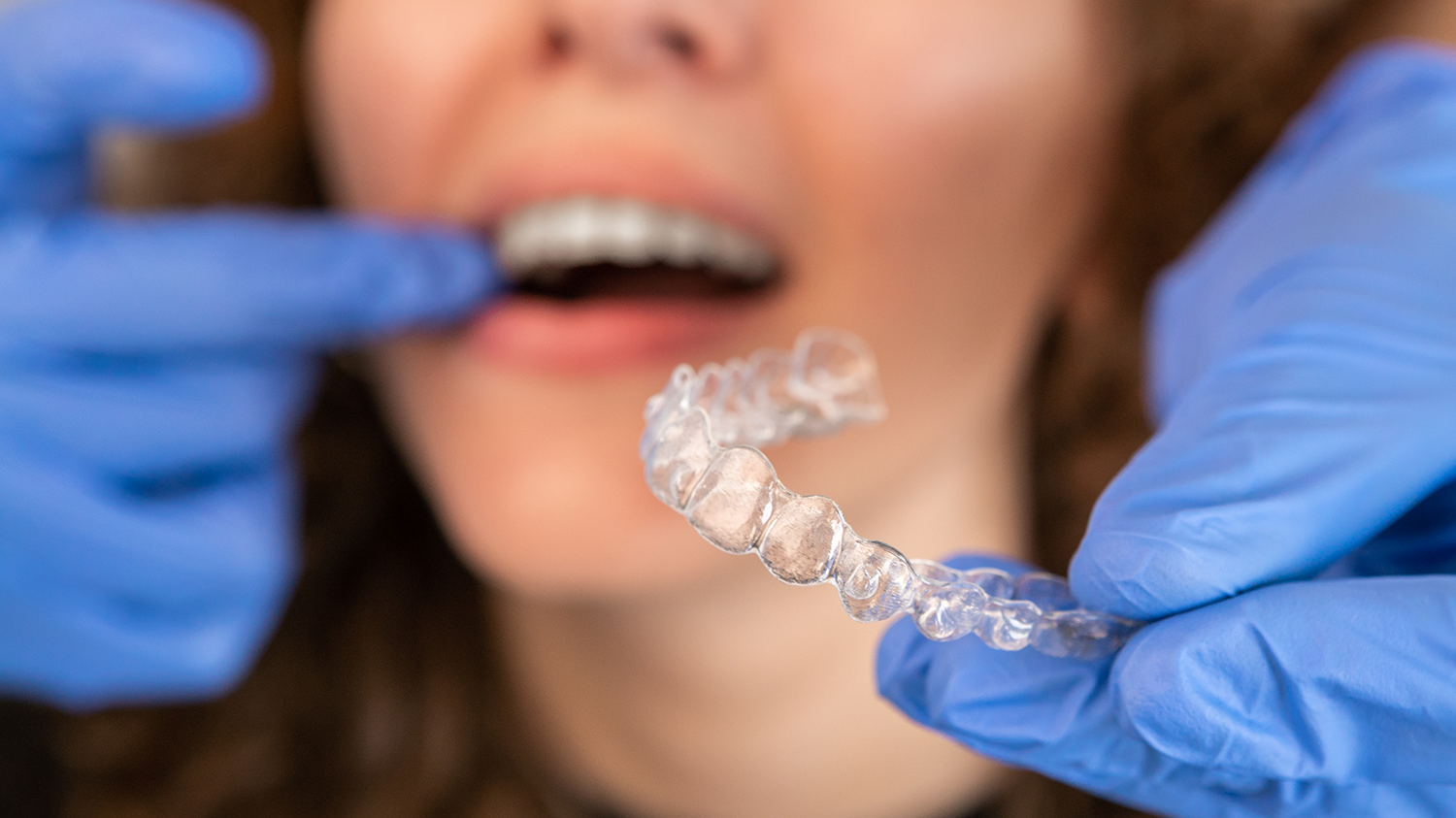We will explore what Invisalign is, what makes it stand out from other aligners, and whether it's the right choice for you.

You may have heard that Invisalign, while effective and a more aesthetic alternative, can be quite costly. On average, in Australia, the cost ranges from $2,000 to $8,000, depending on the complexity of the case and the length of treatment.But wait, is it worth it? In this blog, we will explore what Invisalign is, what makes it stand out from other aligners, and whether it's the right choice for you.At Smile Place, we understand your concerns and aim to provide you with all the necessary information to make an informed decision about your dental health.
Invisalign is a modern orthodontic treatment designed to straighten and align your teeth. It uses clear, custom-made aligners that are virtually invisible, making them a preferred choice over traditional braces. These aligners are tailored to each individual for maximum comfort.You may wonder how Invisalign compares with other clear aligners. For a start, Invisalign treatment is backed by over two decades of innovative advancements. Thanks to investments in R&D, the brand has achieved a product that now stands out from other clear aligners. This is mainly due to the combination of its advanced technologies in three areas:
Material & Comfort
Invisalign’s SmartTrack material provides enhanced comfort, making the aligners easier to wear and remove throughout treatment. It’s also BPA-free, made from medical-grade transparent polymer film — safe, smooth, and virtually invisible.
Treatment Plan Accuracy
With the iTero Element™ scanner capturing 6,000 images per second and the advanced ClinCheck software simulating ideal outcomes, Invisalign offers precise planning. This combination helps your dentist map out tooth movements with accuracy, so every stage of your smile transformation is efficient and effective.
Movement
SmartForce™ Attachments are small, tooth-coloured shapes placed on select teeth to help guide complex movements. Acting like subtle handles, they give your aligners the gentle grip needed to shift teeth without the need for metal braces.

Invisalign clear aligners offer numerous benefits that set them apart from traditional braces and other clear aligner brands:
The clear aligners are hardly noticeable, allowing you to smile confidently throughout your treatment without the aesthetic concerns associated with metal braces.
Each set of aligners is tailored to fit your mouth perfectly, ensuring maximum comfort by using advanced SmartTrack material and a process of accurate scanning with the iTero Element™ scanner.
Removable aligners make oral hygiene tasks like brushing and flossing simple and straightforward. They can be taken out so you can maintain your regular dental care routine without any limitations.
Straighter teeth contribute to healthier gums and less tooth decay because it is easier to brush teeth thoroughly, which reduces the risk of plaque buildup and other dental issues.
Good dental health positively impacts your overall health, reducing the risk of serious conditions such as heart disease, stroke, and diabetes. Having a great smile with Invisalign clear aligners does your mental health good too, giving you the confidence boost you need everyday.

Step 1 – Initial Consultation
Your journey begins with a visit to your dentist or orthodontist, where they will take digital scans or physical impressions of your teeth to get an accurate picture of your starting point.
Step 2 – Creating a Digital Model
Using Invisalign’s advanced iTero Element™ scanner and ClinCheck software, a precise digital model of your teeth is created. This model helps develop a detailed treatment plan, showing the projected movement of your teeth and estimating how long the treatment will take, giving you a sneak peek of your future smile.
Step 3 – Custom-Made Aligners
Based on your treatment plan, a series of custom aligners (also known as trays) are crafted just for you. Each aligner is slightly different, gradually moving your teeth step by step towards their perfect positions.
Step 4 – Wearing Your Aligners
When you receive your aligners, you’ll need to wear them for 20 to 22 hours a day, taking them out only for eating, drinking (except water), brushing, and flossing. It might take a bit of adjustment, but it’s totally worth it for that perfect smile.
Step 5 – Switching Aligners
Every one to two weeks, as guided by your dentist or orthodontist, you’ll switch to a new set of aligners. This keeps your teeth progressing smoothly towards their desired position.
Step 6 – Regular Check-Ups
Regular check-ups every 6 to 8 weeks are essential to monitor your progress. During these visits, your dentist or orthodontist will ensure everything is on track and make any necessary adjustments.
Step 7 – Retainers
After your teeth have moved to their correct positions, you’ll likely need to wear retainers at night. This step is crucial to maintain your new smile and prevent your teeth from shifting back.
i7
Number of aligners: Up to 7
Estimated price: $2,000
Lite
Number of aligners: 8 – 14
Estimated price: $4,000
Full
Number of aligners: 15 – 39
Estimated price: $6,000
Complex
Number of aligners: 40+
Estimated price: $8,000
The cost of Invisalign aligners reflects the advanced technology used to customise your treatment plan and the ongoing support and adjustments required throughout your journey.
The extent of correction your teeth need
More complex alignment issues typically require longer treatment times and more resources, which can increase the overall cost.
The total number of aligners necessary for your treatment
Each set of aligners represents a step in your treatment, so the more aligners you need, the higher the cost may be.
The frequency of adjustments required throughout the process
More frequent check-ups and adjustments mean more professional time, which can add to the total expense.
The portion of the cost covered by your insurance
Your dental insurance plan may cover some of the cost, but coverage varies, which impacts how much you’ll need to pay out-of-pocket.

Although the overall cost of Invisalign may seem high, the value you get is unparalleled. If Invisalign treatment can provide you with the solution you teeth need, it helps to see it as an investment in your long-term dental health and self-confidence.That said, there are ways you can approach this treatment to help you get the most value for your spend. Here are a few things to consider:
Before committing to Invisalign, assess if it’s the right treatment for your specific dental needs; sometimes less expensive options might be effective for minor adjustments.
Prices can vary between dentists and orthodontists, so it’s wise to compare costs and services to find the best deal without compromising quality.
A longer treatment plan might cost more overall, but shorter plans with fewer aligners can be more affordable, so discuss treatment duration with your dentist.
Look for providers that offer flexible payment plans, financing options, or discounts for upfront payments to manage the costs more effectively. As mentioned earlier, Smile Place Dental is ready to discuss viable payment methods with our customers.
Check with your dental insurance to understand what portion of the treatment might be covered, as this can significantly reduce your out-of-pocket expenses.
Have a detailed consultation with your dentist to explore all available treatment options and determine if Invisalign is the most cost-effective solution for your situation.
Thinking about getting started on your path to a healthier, more beautiful smile?Learn more about how Invisalign clear aligners can help you and what the treatment entails.If you’re still unsure and want to discuss your options, feel free to schedule a consultation with our friendly team at Smile Place Dental. We’re more than ready to help.

Invisalign is a clear aligner system that straightens teeth using advanced technology that helps to gradually shift your teeth into place.
Invisalign treatment typically takes between 12 to 18 months, but this can vary based on individual needs.
Invisalign is generally not painful, as it's designed using materials that provide extra comfort, though you may experience mild discomfort initially when switching to a new set of aligners.
Aligners should be worn for 20 to 22 hours a day, removing them only for eating, drinking, brushing, and flossing.
No, you should remove your aligners before eating to avoid damaging them and to ensure proper oral hygiene.
There might be a slight adjustment period, but most people find that their speech returns to normal quickly as they adjust to speaking with the aligners on.
Yes, but it's recommended to wear a mouthguard during contact sports to protect both your teeth and the aligners.
Smoking is not recommended as it can stain the aligners and affect their clarity.
The cost of Invisalign varies, but it typically ranges from $2,000 to $8,000 depending on the complexity of the case and the length of treatment.
You’ll need to visit your dentist or orthodontist every 6 to 8 weeks to monitor your progress and receive new aligners.
Invisalign can treat a wide range of orthodontic issues such as underbite, overbite, crossbite, open bite, gap teeth, and crowded teeth, but severe cases might require alternative treatments.
Contact your dentist or orthodontist immediately; they may advise you to move on to the next set of aligners or use a previous set temporarily.
If you forget to wear your aligners, your treatment may be delayed; it’s important to wear them as directed to ensure the best results.
Clean your aligners daily using a toothbrush and lukewarm water, and avoid mouthwash, other cleaning substances, and hot water which can warp the plastic.
After treatment, you’ll likely need to wear retainers to maintain your new smile and prevent your teeth from shifting back.